Italians wrote the words VINCEREMO – WE WILL WIN on the walls. As Anton Stipanič recalls, the anti-fascists of Bela krajina added VIDET ČEMO – WE SHALL SEE.
In Bela krajina the occupation border between Fascist Italy and the Ustasha Independent State of Croatia (NDH) ran along the boundary of the Črnomelj srez (administrative unit) from Trdinov vrh along the ridge of the Gorjanci/Žumberak mountain range to the Kolpa River near Božakovo and then upstream of the Kolpa River to Predgrad. At the Gorjanci/ Žumberak mountain range, the Italians intended to build a zone of barbed-wire fences and bunkers. There was to be no barbed-wire fence upstream of the Kolpa River, only fortified bridges and other facilities. Before Italy’s capitulation, they succeeded in building only five bunkers near Metlika. The border greatly affected the farmers who had land on both sides of the border. The residents of Žumberak with Orthodox roots were protected against Ustasha raids by the border with the NDH. A strong partisan movement developed very quickly, forcing the Italians to abandon their smaller, mainly border posts as early as in the second half of 1942. From then on, they stayed only in larger towns, which they enclosed entirely or partially with bunkers and barbed wire.
After Italy capitulated in September 1943, Bela krajina became a free territory and was chosen as the seat of the Executive Committee of the Liberation Front, and of many other institutions. Until the end of the war Bela krajina witnessed only a few individual raids launched by Germans and the Ustasha.
Nowadays, we automatically draw comparisons between the former occupation border and today’s fenced and barbed-wire border with the Republic of Croatia, especially along the Kolpa River.
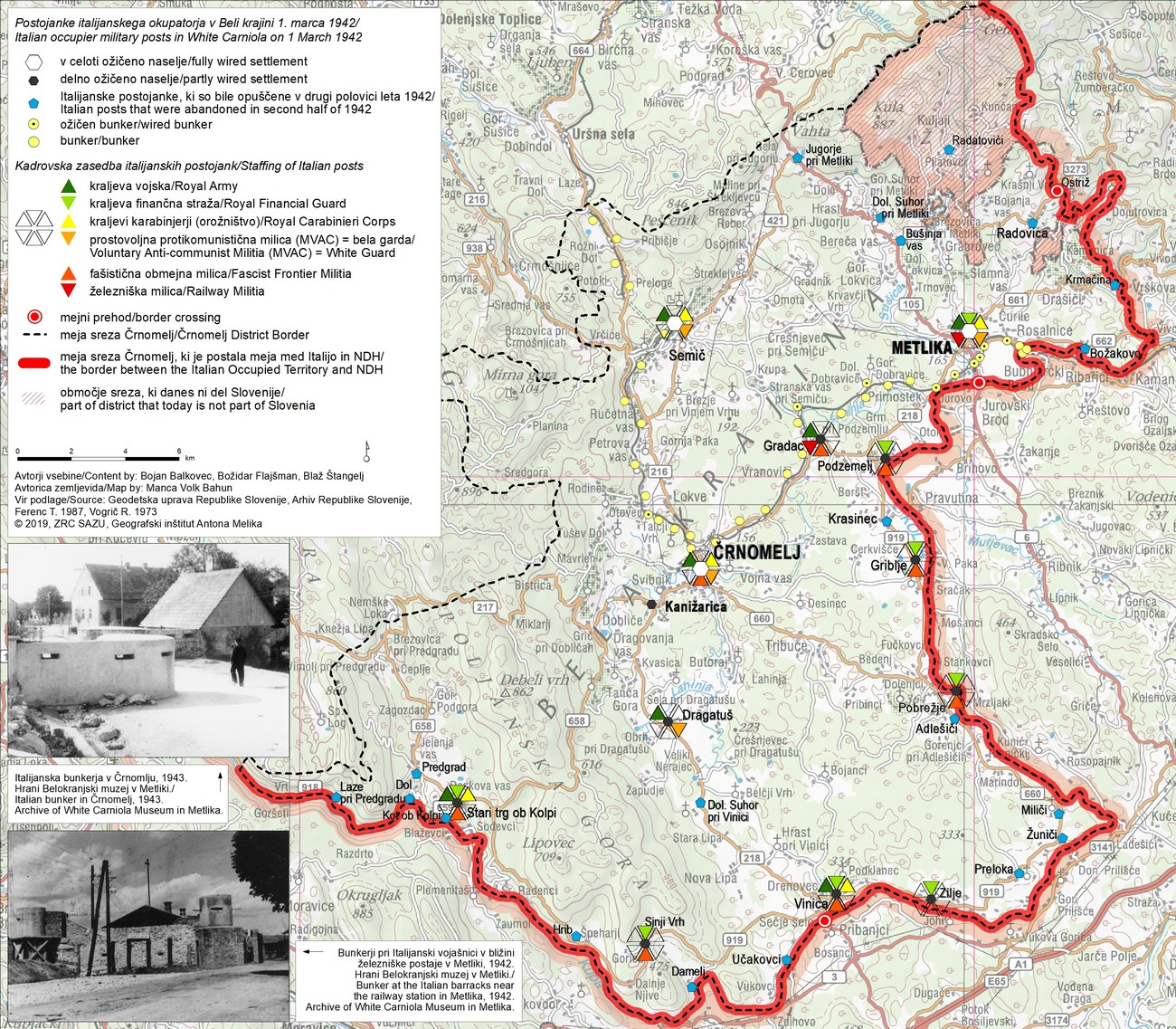
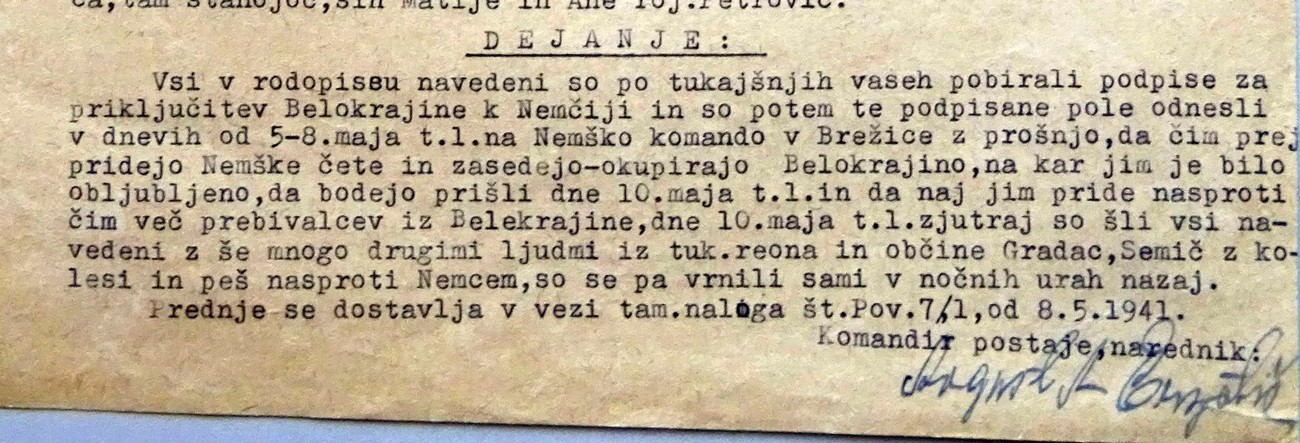
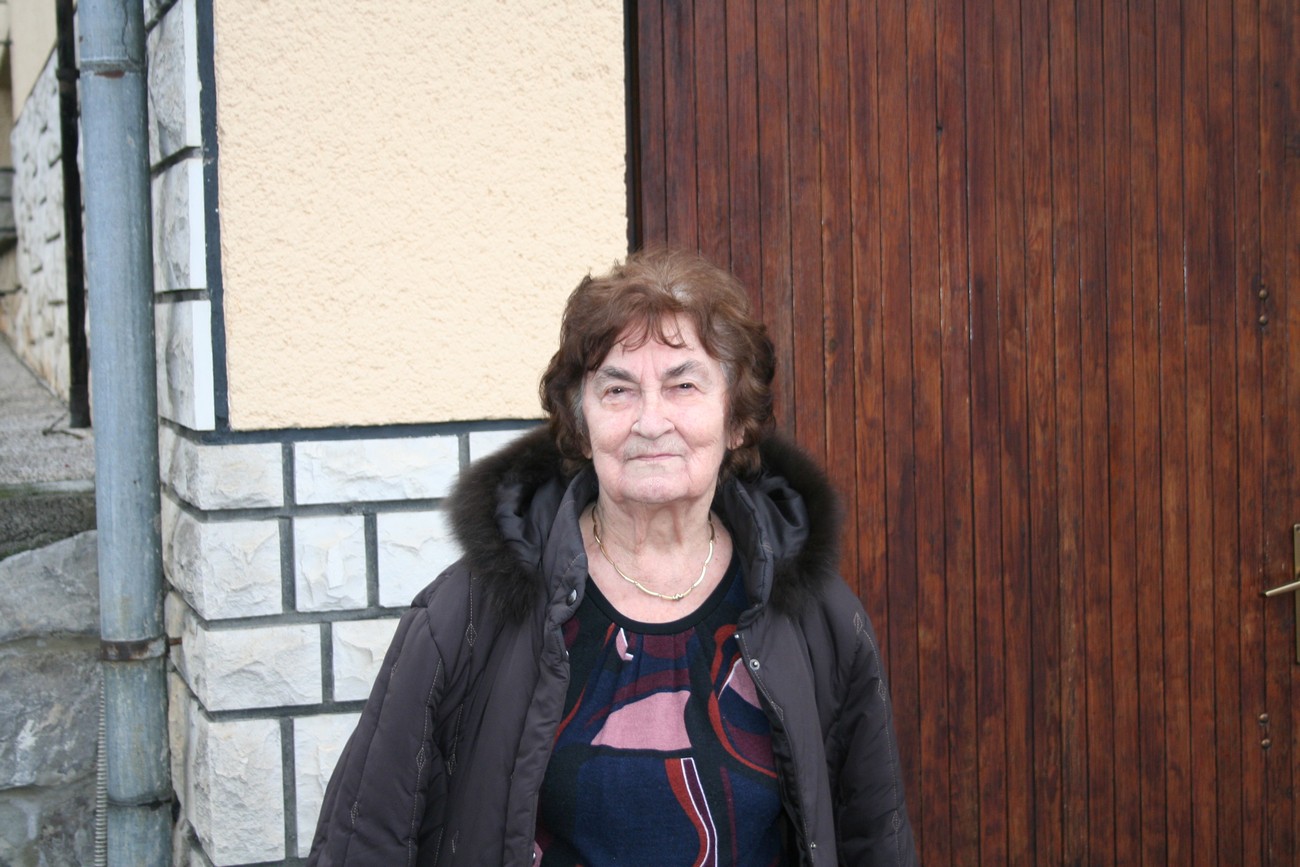
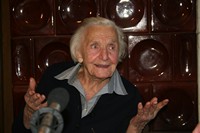
The people reacted to the arrival of the occupying army in different ways. According to Marija Starešinič from Preloka, the parish priest of Preloka, Jože Pokorn, told the girls:
Girls, foreign men wearing uniforms have come to Preloka. If any of you will go dancing with these boys or spend time with them, then after the war you will not be worthy of the attention of a Slovene boy or to be warmed by the Slovene sun.(Author: Sonja Bezenšek.)
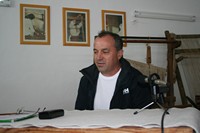
We were lucky to belong to the Italian Occupation Zone, because the majority population in this area was of Serbian nationality but also the Eastern Catholics of the Byzantine Rite. I was told that sometimes flyers appeared at the border, which declared: ‘When we arrive, a head will be hanging from each beech tree.’ That was of course the work of the Ustasha. The people were afraid back then. But luckily they never arrived.(Author: Božidar Flajšman.)
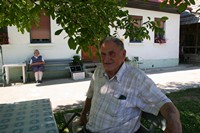
We greatly benefited from the border, because the NDH couldn't come here – the army, that is, because they knew who we were and that we were preparing a revolt. Our roots are Orthodox.(Author: Sonja Bezenšek.)

In April 1941, the Italians occupied the valley of Poljane /…/. They had their groups along the Kolpa River, in almost every village. We can't exactly call them posts, they were basically border controls. There were ten members of the Italian Financial Guard in almost every village. They were there until May 1942 when the resistance movement began to grow. The Italians were forced to withdraw their garrisons from these villages and to centralize in Stari trg. Thus, from May onwards, there were no more Italian soldiers in the valley of Poljane, with the exception of Stari trg.(Author: Božidar Flajšman.)